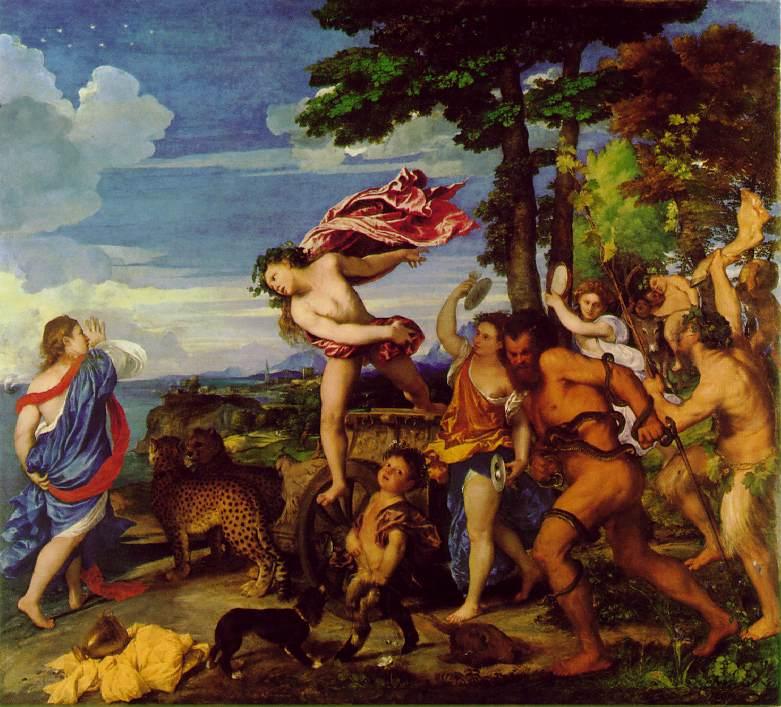The second week of October traditionally marks the climax of the grape-picking season in Bordeaux, so it seemed appropriate to choose a painting in which Bacchus, god of wine, plays a leading role. Bacchus and Ariadne, by Titian, was completed in 1523. The painting now hangs in the National Gallery, but it was originally commissioned by the Renaissance prince Alfonso d’Este as one of a series of canvases intended to recreate the lost masterpieces of ancient Roman and Greek painting.
Its theme is the love conceived for a mortal by a god. Ariadne, daughter of Minos, King of Crete, having been abandoned on the island of Naxos by the ungrateful Theseus (whom she had earlier helped to escape from the Minotaur’s labyrinth), suddenly encounters Bacchus, who leaps upon her and takes her for his wife. Titian drew on various classical sources for inspiration. His depiction of Bacchus’s riotous train of followers was based on a passage in the 64th poem of the Roman author Catullus: “Bacchus was rushing up and down with his dancing band of satyrs…looking for you, Ariadne. Some of them were waving thyrsi with covered points, some were tossing about the limbs of a mangled steer, some were girding themselves with writhing serpents; some were bearing in solemn procession dark mysteries enclosed in caskets, mysteries which the profane desire in vain to hear. Others were beating tambourines with uplifted hands, or were raising sharp ringings from cymbals of rounded bronze…”
But Catullus does not describe the actual encounter between Bacchus and Ariadne, so Titian also consulted Ovid’s Ars Amatoria (“The Art of Love”). Ovid tells of how Ariadne “was wandering distractedly on the unknown sand, clad in an ungirt tunic, barefoot, with yellow hair unbound”, calling out Theseus’s name in vain, when Bacchus and...


